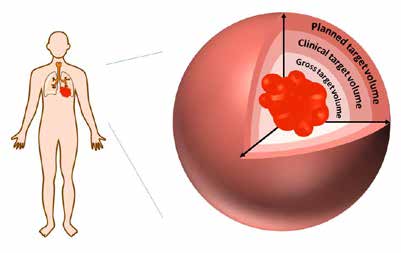Several new diagnostic methods with applications in cancer diagnostics and in blood pool imaging have been developed.
Accurate diagnostics can improve therapeutic outcome as well as patient compliance. In the project, several new diagnostic tools were developed for medical imaging with applications in cancer diagnostics and in blood pool imaging.
Approximately 50% of all cancer patients receive radiotherapy. As tumors rarely display a fixed position during therapy, it is desirable to use an injected marker as a point of reference to secure that the radiation dose targets the tumor rather than the surrounding sound tissue. In the project, a fiducial marker based on encapsulated gold nanoparticles (AuNPs) within a gelation matrix of sucrose acetate isobutyrate (SAIB) was developed. The marker was tested in vivo in mice and a canine dog, displaying contrast in the range of 1200 HU which decreased to 800 HU over 8 weeks indicating potential aggregation of AuNPs within the SAIB formulation.

Illustration:
Chematic representation of the different kinds of target volume.
A tissue marker for surgical guidance of non-palpable tumors in breast cancer was also developed. As radioactive tracer, radioiodinated SAIB-derivatives were developed based on the regio-selective ipso-iodination of aryl-TMS moieties. The radiochemical yield was 83% with a radiochemical purity of 95 %. The formulation was tested in vivo as a potential tissue marker in mice, showing excellent stability and contrast properties. A dosimetric calculation for human patients indicated that vital organs and tissues would not be considerably affected by the radiation dose.
Further, a small library of iodide-based contrast agents for remote loading in liposomes was synthesized for blood pool imaging. Long circulating contrast agents for blood pool imaging by CT-imaging are of interest due to the current limitations of short retention times and the considerable amounts needed to achieve a proper contrast. Remote loading of one candidate was successful; however, the proper contrast level was not sufficient to be visible by CT-imaging.
Finally, site-specific radio-iodination of peptides and proteins was performed. To achieve a conclusive outcome in radio-immuno-assays as well as retaining a high binding affinity of receptor binding peptides, regioselective radioiodination is crucial. Therefore, a TMS-substituted tyrosine was synthesized via the Negishi coupling to test if regioselective iodination could be obtained. The tyrosine derivative was used in the synthesis of dipeptides of phenylalanine, tyrosine and tryptophan respectively in order to evaluate the selectivity towards ipso-substitution of the TMS in the iodination reaction. First proofof- concept experiments using aryl-TMS as placeholder in the site-specific iodination of peptides and proteins were demonstrated.